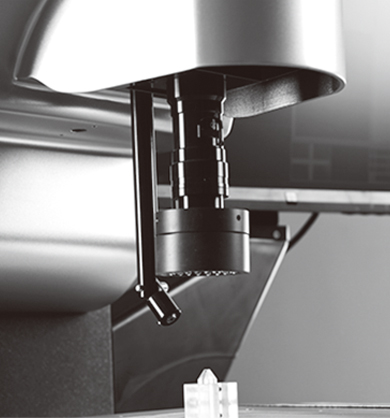Thermal protectors are essential components used in a wide variety of electrical and electronic devices to prevent overheating. From electric motors and transformers to household appliances and medical equipment, these small but vital components help maintain safety, reliability, and performance. But how do you ensure that a thermal protector is functioning properly? Testing thermal protectors is a critical step during quality assurance, equipment servicing, and preventive maintenance.
What Is a Thermal Protector?
A thermal protector is a temperature-sensitive device designed to interrupt the flow of electricity or send a signal when a system overheats. It acts as a thermal switch that opens or closes based on a preset temperature limit.
There are several types of thermal protectors:
Bimetallic thermal switches: Open or close a circuit using a metal strip that bends with temperature changes.
Thermistors: Temperature-sensitive resistors, either Positive Temperature Coefficient (PTC) or Negative Temperature Coefficient (NTC).
Thermal fuses: One-time use devices that permanently break the circuit when a certain temperature is reached.
Electronic thermal sensors: Provide data for intelligent systems that adjust or shut down equipment based on real-time temperature readings.
Each of these devices may require a different method of testing.
Why Testing Thermal Protectors Is Important
Thermal protectors are the first line of defense against overheating. If they fail, the result can be catastrophic, including:
Motor burnout
Appliance malfunction
Electrical fires
Reduced equipment lifespan
Safety hazards to users
Regular testing ensures:
Functional reliability
Compliance with safety standards
Prevention of unexpected downtime
Tools You’ll Need
Depending on the type of thermal protector you're testing, you may need the following tools:
Multimeter (with ohmmeter function)
Heat gun or hot air blower
Thermometer or infrared temperature sensor
Test bench or controlled heating environment
Insulation gloves and protective eyewear
How to Test Thermal Protectors – Step-by-Step Guide
1. Visual Inspection
Before conducting any electrical tests:
Disconnect the power source.
Inspect the protector for visible signs of damage (cracks, burns, corrosion).
Check the part number to verify its temperature rating and type.
2. Continuity Test Using a Multimeter
This is the most basic and commonly used method for testing bimetallic thermal switches and thermal fuses.
Steps:
Set the multimeter to continuity or resistance (ohms).
Connect the multimeter probes to the two terminals of the thermal protector.
Check the reading:
If the protector is normally closed (most common), the multimeter should show low resistance or a beep (indicating continuity).
If it's open, the protector may have tripped or is faulty.
Apply heat using a heat gun or blower (gradually).
Monitor the multimeter:
At the rated temperature, the switch should open (infinite resistance).
When it cools down, it should reset (continuity resumes).
Note: Thermal fuses will not reset—once open, they must be replaced.
3. Resistance Test for Thermistors
For PTC or NTC thermistors, the resistance changes with temperature.
Steps:
Measure the initial resistance at room temperature.
Apply controlled heat.
Observe the resistance:
NTC: Resistance decreases as temperature increases.
PTC: Resistance increases with temperature.
Compare the readings against the manufacturer's specifications to verify functionality.
4. Temperature-Triggered Bench Test (Advanced)
For more precise testing, especially in labs or manufacturing:
Place the thermal protector in a temperature-controlled oven or chamber.
Connect it to a continuity tester or alarm system.
Slowly increase the temperature.
Record the exact point at which the protector opens (trips).
Compare the tripping point to the rated temperature (usually marked on the component).
This method is ideal for high-accuracy calibration or verifying devices used in sensitive applications like medical or aerospace equipment.
Interpreting Test Results
Result | Interpretation |
Continuity at room temp, breaks at high temp | Normal function (for NC switches) |
No continuity at room temp (fuse) | Fuse is blown or protector is tripped |
Resistance doesn’t change with heat | Thermistor may be defective |
Opens or closes at incorrect temp | Out of spec — should be replaced |
Tips for Accurate Testing
Always verify the temperature rating and normal state (open or closed) before testing.
Avoid applying heat too quickly, as it may damage the device.
Use manufacturer datasheets for comparison.
Wear protective gear to avoid burns or electric shock.
Never reuse thermal fuses—they are one-time safety devices.
When to Replace a Thermal Protector
Even if a thermal protector passes basic tests, it should be replaced if:
It activates too early or too late (outside rated range)
The casing is damaged or corroded
It’s a non-resettable fuse that has blown
The protector is over 5–10 years old and in constant use
Testing thermal protectors is a critical process that ensures the safety and reliability of electrical equipment. Whether you’re using a simple multimeter or a lab-grade test bench, the goal remains the same: to confirm that the protector will function properly when overheating occurs. By regularly inspecting and testing thermal protectors—especially in high-demand environments—you can prevent costly equipment failures, reduce downtime, and maintain high safety standards.













 中文
中文 English
English Deutsch
Deutsch Italiano
Italiano 한국어
한국어 にほんご
にほんご


